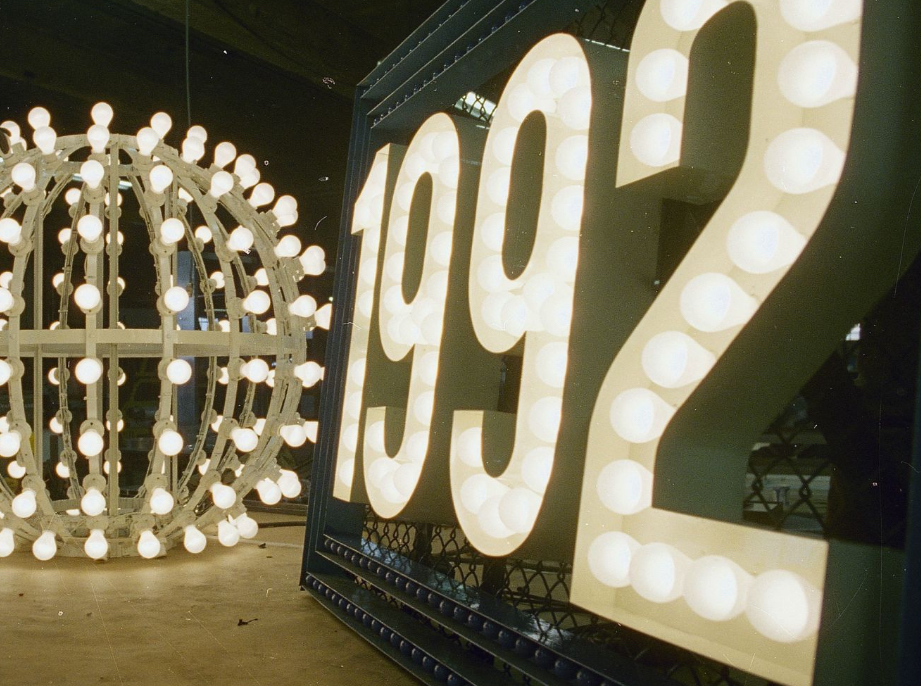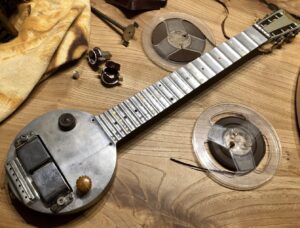The Times Square Ball Drop has become one of the most iconic New Year’s Eve traditions in the world, drawing millions of viewers both in person and via television broadcasts each year. The tradition, however, is far more than just a glittering spectacle. Its origins lie in the ingenuity of early 20th-century innovators and the historical maritime practice of the “time ball.”
The Problem with Fireworks
New York City, in the early 1900s, was already an epicenter of celebration and innovation. However, by 1907, fireworks—previously a popular choice for ringing in the new year—posed challenges. Ash and debris rained down on crowds gathered in the streets, creating safety and cleanliness concerns. Seeking an alternative, New York Times publisher Adolph Ochs tasked Walter Palmer, the newspaper’s chief electrician, with designing a spectacle that would be just as dramatic and celebratory but without the drawbacks of pyrotechnics.
The Maritime Time Ball: A Source of Inspiration
Palmer’s inspiration came from a surprising source: the maritime time ball. This tradition originated in 1833 when England’s Royal Observatory installed the first known time ball atop its Greenwich location. Dropped daily at a precise time, the ball helped ship captains synchronize their navigational instruments. The practice quickly spread, with over 100 locations worldwide adopting time balls for similar purposes.
In the United States, time balls were used in ports like Washington, D.C., at the U.S. Naval Observatory. Although their practical use diminished with the advent of more advanced timekeeping devices, the symbolic nature of the time ball—representing precision, coordination, and celebration—remained influential.
The First Times Square Ball
Inspired by the maritime tradition and the Western Union Telegraph Company’s noontime ball in downtown Manhattan, Palmer devised a new kind of time ball. This wasn’t a tool for navigation but a celebratory display of modern engineering and electric lighting. The first ball was constructed using a 700-pound combination of iron and wood and outfitted with 100 incandescent light bulbs. It was designed to descend from a 50-foot pole erected atop the 400-foot tower that housed the New York Times headquarters in Times Square.
The task of creating this ball fell to a young metalworker named Jacob Starr. Starr, an immigrant and skilled craftsman, built the ball through his company, Artkraft Strauss. His creation marked the beginning of a long-standing relationship between Artkraft Strauss and the Times Square ball drop tradition.
The Mechanics of the First Drop
Unlike today’s sophisticated systems, the first ball drop was a manual operation. It required a team of over six men and a rope to guide the descent of the ball. The simplicity of the mechanism belied the visual and emotional impact of the event. As the ball descended, thousands of New Yorkers in the square—and countless others via news reports—watched in awe, heralding the arrival of 1908 with this novel and dazzling display.
Evolution of the Times Square Ball
Over the years, the Times Square Ball has undergone numerous transformations. What began as a simple iron-and-wood creation has evolved into a high-tech, multimedia centerpiece of global celebration.
1920s–1940s: Material Upgrades
In the 1920s, the original ball was replaced with a lighter model made of all iron. This version weighed 400 pounds and was easier to operate, reflecting the advancements in engineering and materials science of the era.
1955: Aluminum Innovation
By the mid-20th century, aluminum replaced iron as the primary material for the ball. This innovation reduced the ball’s weight to 150 pounds, making it significantly easier to handle. Despite these changes, the fundamental tradition of lowering the ball remained intact.
Lighting the Way: The Advent of Neon and LED
As lighting technology advanced, so did the ball’s design. Neon lights and eventually LEDs replaced the incandescent bulbs of earlier models, offering brighter, more energy-efficient displays. Today’s ball boasts over 32,000 LED lights capable of producing millions of colors and intricate patterns, creating a dazzling visual experience for viewers worldwide.
The Modern Ball: A Technological Marvel
The current ball, introduced in 2008 to celebrate the centennial of the tradition, is a connect between Waterford Crystal and Philips Lighting. Measuring 12 feet in diameter and weighing nearly 12,000 pounds, it features 2,688 crystal panels and advanced lighting systems. This modern iteration embodies both artistry and cutting-edge technology.
The Role of Artkraft Strauss
Jacob Starr’s company, Artkraft Strauss, played a central role in the ball drop for much of the 20th century. From building the original ball to managing its annual descent, the company became synonymous with the Times Square tradition. Artkraft Strauss’ expertise in lighting and large-scale displays extended beyond the ball drop, contributing to Times Square’s reputation as a hub of neon lights and advertising.
Cultural Significance
The Times Square Ball Drop is more than just a New Year’s Eve celebration; it’s a symbol of hope, renewal, and shared experiences. During challenging times, such as World War II, the Great Depression, and even the COVID-19 pandemic, the ball drop has served as a unifying moment for people around the world.
Global Reach
While the tradition began as a local celebration, it has grown into a global event. Broadcasts of the ball drop reach millions of viewers in nearly every country, making it a shared experience that transcends borders and cultures.
Symbol of Progress
The ball drop reflects advancements in technology, design, and communication. From its humble beginnings as a manually operated display to its current status as a technological marvel, the tradition showcases human ingenuity and the ability to adapt and innovate.
A Beacon of Resilience
Even in difficult years, such as during the COVID-19 pandemic when the square was empty of crowds, the ball drop continued. This resilience highlights the tradition’s enduring significance and its role as a symbol of optimism for the future.
Behind the Scenes: The Modern Drop
Today, the ball drop is a meticulously planned event involving hundreds of technicians, engineers, and event coordinators. The descent, which takes precisely 60 seconds, is controlled by state-of-the-art systems to ensure perfect timing. The surrounding celebrations, including musical performances, fireworks, and confetti showers, add to the spectacle.
Looking to the Future
As we move further into the 21st century, the Times Square Ball Drop continues to evolve. Advances in sustainability, such as the use of energy-efficient lighting and recyclable confetti, reflect a commitment to environmental responsibility. Additionally, the integration of augmented reality and virtual experiences may expand access to the event, allowing more people to participate from anywhere in the world.
The Times Square Ball Drop is a celebration of innovation, tradition, and unity. From its origins as a simple solution to the problems of fireworks to its status as a global cultural phenomenon, the ball drop encapsulates the spirit of progress and festivity. As millions gather each year to watch the glowing ball descend, they are not just marking the passage of time but also celebrating human creativity and resilience. This enduring tradition, steeped in history yet continually reinventing itself, remains a shining symbol of the hope and possibilities that each new year brings.
No comments yet.








